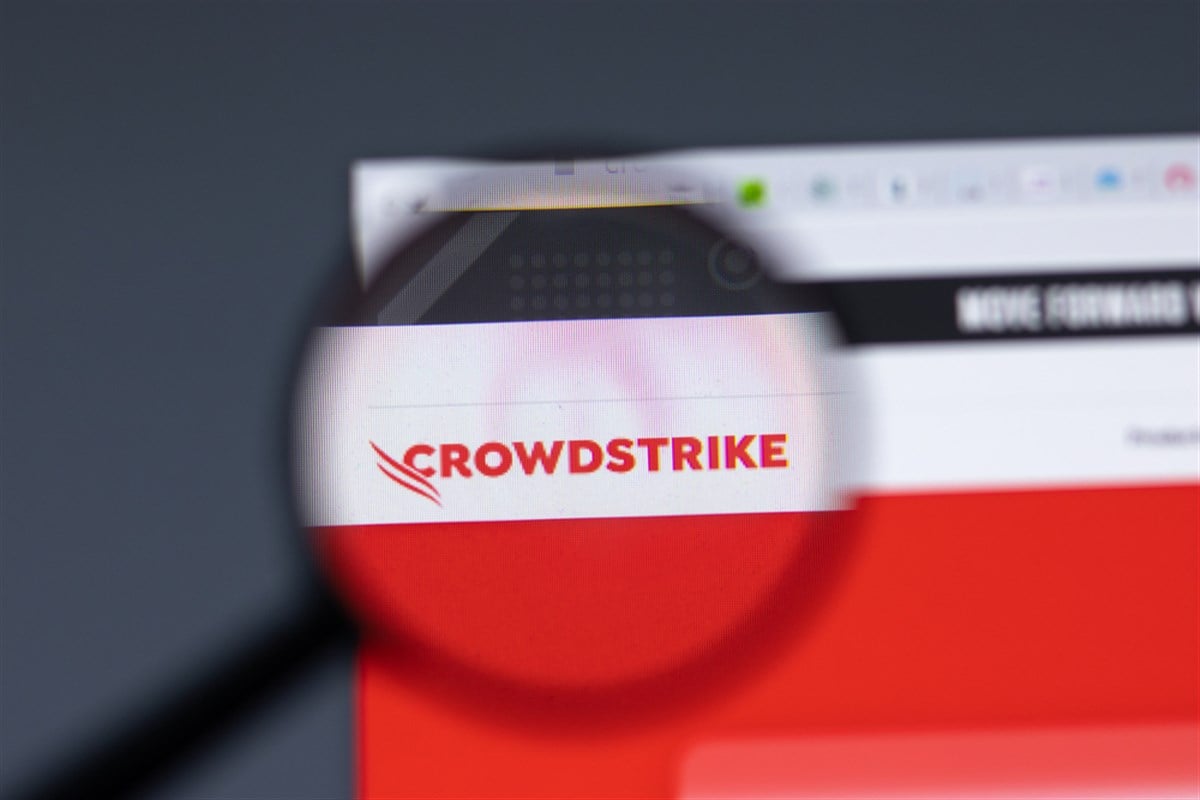 The SPDR S&P Homebuilders ETF (XHB) has entered bear market territory, down nearly 24% from its 52-week high as mounting challenges weigh on... ͏ ͏ ͏ ͏ ͏ ͏ ͏ ͏ ͏ ͏ ͏ ͏ ͏ ͏ ͏ ͏ ͏ ͏ ͏ ͏ ͏ ͏ ͏ ͏ ͏ ͏ ͏ ͏ ͏ ͏ ͏ ͏ ͏ ͏ ͏ ͏ ͏ ͏ ͏ ͏ ͏ ͏ ͏ ͏ ͏ ͏ ͏ ͏ ͏ ͏ ͏ ͏ ͏ ͏ ͏ ͏ ͏ ͏ ͏ ͏ ͏ ͏ ͏ ͏ ͏ ͏ ͏ ͏ ͏ ͏ ͏ ͏ ͏ ͏ ͏ ͏ ͏ ͏ ͏ ͏ ͏ ͏ ͏ ͏ ͏ ͏ ͏ ͏ ͏ ͏ ͏ ͏ ͏ ͏ ͏ ͏ ͏ ͏ ͏ ͏ |
| | Written by Ryan Hasson 
The homebuilders sector has recently come under significant pressure, with the SPDR S&P Homebuilders ETF (NYSEARCA: XHB) officially entering bear market territory. At the start of this week, the ETF is down nearly 24% from its 52-week high and over 8% year-to-date (YTD). With the sector ETF now trading at levels not seen since early 2024, investors may wonder if this extreme correction presents a compelling buying opportunity. Two upcoming catalysts—interest rate guidance and housing starts data—could provide clarity. Until then, the market may remain cautious but reactive. Challenges Driving the Homebuilders' Sell-Off The homebuilders sector’s downturn in 2025 reflects a mix of macroeconomic and industry-specific challenges. Elevated financing costs due to persistently high interest rates, ongoing supply chain disruptions, and looming tariffs on key materials like lumber, steel, and aluminum have significantly pressured margins. The National Association of Home Builders (NAHB) estimates that recent tariff actions alone could add $9,200 to the cost of constructing a typical home. Coupled with labor shortages and limited buildable land, sentiment in the sector has soured, as reflected in the NAHB/Wells Fargo Housing Market Index dropping to 39 in March 2025, a seven-month low. Meanwhile, broader housing market trends present a mixed picture. Median new home prices have risen roughly 5% year-over-year through February 2025 due to tight inventory and resilient demand. Likely due to a resilient labor market, sales of existing homes rose to 4.26 million on a seasonally adjusted annualized basis between January and February. However, new home sales, which rose 3.6% in December 2024 to an annualized 698,000 units, have stalled in early 2025 as affordability concerns mount. Pending home sales data for February 2025 showed a modest 2.0% month-over-month increase, but the index remains down 3.6% year-over-year, highlighting continued buyer hesitancy amid high borrowing costs. Given the steep decline across the sector, however, the weakening sentiment and headwinds might have been priced in, making this a potential opportunity for long-term buyers. As the sector faces significant headwinds, several of XHB’s top holdings are trading at attractive valuations. PulteGroup (NYSE: PHM) stands out as a potential long-term value play. PulteGroup: A Deep Value Opportunity? PulteGroup, which focuses on residential home construction across the U.S., has experienced a sharp sell-off, with shares now down nearly 32% from their 52-week high and 6.5% YTD. While downward pressure could persist, PHM’s valuation metrics have become increasingly appealing. The stock trades at a 6.91 P/E ratio and a forward P/E of 7.45, indicating expectations of weaker earnings ahead but still reflecting deep value. It also has a modest dividend yield of 0.86%. Previously, in January, the company delivered a strong Q4 2024, with earnings per share (EPS) of $4.43, exceeding the estimate of $3.21. Home sale revenues grew 13% year-over-year to $4.7 billion, driven by a 6% increase in closings (8,103 homes) and a 6% rise in average selling price to $581,000. Net new orders rose 4% to 6,167 homes, valued at $3.5 billion, indicating sustained demand. The company expanded its repurchase authorization by $1.5 billion to $2.1 billion, showcasing financial strength with a debt-to-capital ratio of 11.8%. The backlog stood at 10,153 homes, valued at $6.5 billion, positioning PHM well despite a challenging housing market. PulteGroup’s upcoming earnings report, scheduled for April 22, will provide additional insights into the company’s ability to navigate the current housing cycle and climate. Despite near-term uncertainty, analysts remain optimistic, maintaining a Moderate Buy rating based on 17 ratings, with a consensus price target implying 38% upside potential. With the sector trading at multi-year lows and homebuilders adjusting strategies to weather the downturn, now may be an opportune moment for investors to examine select names positioned for long-term resilience.  Read This Story Online Read This Story Online | No more getting faked out by false breakouts that immediately reverse.
Just clean, precise entries when momentum is PROVEN to push prices in one direction.
Even though I've kept this under wraps for months, it's beginning to get clear to me that I might just be sitting on something that could change the narrative for a lot of traders.
So, with that, I've recorded a short presentation that goes over how this is all possible and why now's the best time to use this.  See the presentation here. See the presentation here. |
| Written by Leo Miller 
WallStreetBets (WSB) burst onto the investing scene in early 2021 as retail investors banded together to take on institutional players. The popular trading subreddit led a short squeeze against hedge funds with large short positions in GameStop (NYSE: GME). GameStop shares soared due to the collective buying by WSB participants and the short covering that followed. Shares rose north of 1600% in Jan. 2021. Short covering is when investors close out their short positions by buying shares as the stock price starts to rise instead of fall. This can help limit their losses, but it also causes shares to rise even higher as more buying takes place. In a short squeeze scenario, buying from one group and short covering from another can create a vicious cycle, causing the value of a stock to increase exponentially. WSB remains an active forum on Reddit, where retail investors discuss stocks and other investments. The forum can serve as an interesting barometer for retail investor sentiment and focus. Below are the details on the three most mentioned stocks on WSB over the 30 days ended Feb. 21. This data comes from Quiver Quantitative. NVIDIA: King of Intrigue Among Retail Investors for Good Reason Just as it is among talking heads in financial media, chip giant NVIDIA (NASDAQ: NVDA) is the most talked-about investment on WSB. The stock garnered over 15,000 mentions on the forum over this 30-day window, far surpassing any other investment tracked by Quiver. Mentions of NVIDIA understandably began separating from the rest of the pack after the firm’s Jan. 26 earnings release and the Jan. 27 DeepSeek sell-off. NVIDIA has been the main barometer for gauging the enthusiasm and progress surrounding the GenAI revolution. This has cemented its unrivaled importance in the current market for any one stock. Sentiment for NVIDIA on WSB appears highly positive over the 30 days ended Feb. 21. Quiver tracked 1,872 mentions of calls during that period. This contrasts with the 700 mentions of puts. WSB users didn’t appear to have their bullish sentiment dashed by the DeepSeek sell-off on Jan. 27. On that day and the four days afterward, total call mentions outweighed put mentions by over two to one. WSB Interest Demonstrates the S&P 500’s Dominance The second most mentioned investment on WSB over this 30-day window is the SPDR S&P 500 ETF Trust (NYSEARCA: SPY). SPY had over 10,000 mentions on WSB during this period. SPY is one of the largest and most used ETFs that track the S&P 500 Index. With the S&P 500 being the most commonly used benchmark for large-cap U.S. stocks, it makes sense to see SPY being highly talked about on WSB. Ultimately, where the S&P 500 goes likely has the largest cumulative impact on the entire stock market investing world. Interestingly, when adding in references to the Vanguard S&P 500 ETF (NYSEARCA: VOO), mentions of these S&P 500 trackers top NVIDIA. Together, SPY and VOO mentions were over 16,000. This shows the dominating force of the S&P 500 Index. It is difficult for even a stock like NVIDIA to top the collective interest by following the index. Sentiment was significantly less one-sided among these investments. Together, call mentions for SPY and VOO came in at just under 2,400 compared to 2,200 put mentions. There’s Always Something to Talk About With Elon Musk’s Tesla Tesla (NASDAQ: TSLA) took the third spot for most mentions over this 30-day window, with 6,400 mentions over the period. Tesla has become particularly known for its popularity among retail investors. However, sentiment looks to have become somewhat bearish over this period. Put mentions came in at nearly 1,200, while call mentions were just over 950. This makes some sense, considering that Tesla shares fell over 20% between Jan. 21 and Feb. 21. Tesla has been a hot topic in both financial and general media, especially since Trump took office. Elon Musk’s active involvement in the administration has created polarized views around the stock. Many argue that Musk is seeking and receiving favorable treatment for Tesla through his relationship with Trump. However, there is also significant worry that his role in the administration will distract him from running Tesla to the best of his ability. Musk has been the firm's chief executive officer since 2008.  Read This Story Online Read This Story Online | Something fascinating happened in April...
While a lot of Wall Street institutions were opening new positions in a falling stock, something different showed up on my screen.
A special set of candles had just turned green - signaling the kind of momentum surge I'd seen only a handful of times before.
What happened next?
The stock soared 45% on the underlying stock in just a few weeks and 227% for anyone who traded the options.
Naturally, there would have been smaller wins and those that would not have worked out, but this wasn't some penny stock or crypto play…
It was ARM Holdings - a major semiconductor player that had just shed 9% of its value. I've put together everything you need to know here. |
| Written by Chris Markoch 
The fact that CrowdStrike Holdings Inc. (NASDAQ: CRWD) is beating the broader market in 2025 isn’t particularly noteworthy. It is noteworthy that, after an infamous outage in July 2024, CRWD stock didn’t just recover; it soared to an all-time high in February 2024. And even after a drop of approximately 7.5% in the 30 days ending Apr. 1, analysts still see significant upside for the stock. In the last week of March, BTIG Research analyst Gray Powell upgraded CRWD stock from a Hold to a Buy rating with a $431 price target. Then, on Apr. 1, Stephens initiated coverage of the stock with an overweight rating and a $450 price target. Powell said one reason for the upgrade was the belief that the company’s recent earnings report means the headwinds from the July outage have mostly receded. In the company’s March earnings report, which covered the fourth quarter of its 2025 fiscal year, CrowdStrike beat narrowly on the top line but delivered an impressive 19% beat on earnings. That was also an impressive 329% beat on earnings on a year-over-year (YOY) basis. The analyst coverage hasn't been completely bullish. In March, several analysts, including Truist Financial Corp. (NYSE: TFC) and Jefferies Financial Group, lowered their price targets for CRWD stock. However, it’s important to note that in both cases, the price targets of $450 and $410, respectively, are above the current consensus price target. CrowdStrike’s Revenue Is Becoming Sticky Analysts are zeroing in on the growth in CrowdStrike’s annual recurring revenue (ARR). In the last quarter, the company reported $4.24 billion in ARR at the end of the fiscal year, a 23% YOY gain. That included $224 million in new ARR. CrowdStrike is guiding to between $4.74 billion and $4.80 billion in total revenue for fiscal year 2026. A key reason for the revenue growth is that companies continue to add more modules to CrowdStrike’s Falcon platform. This is also why Palo Alto Networks Inc. (NASDAQ: PANW) is moving to a platformization strategy in hopes of increasing its ARR. Another reason why analysts are bullish is that CrowdStrike’s estimates are not likely to factor in the company’s recent Federal Risk and Authorization Management Program (FedRAMP) authorization. This will allow CrowdStrike to compete for contracts within the federal government. When you consider that the company’s subscription revenue comes with an 80% margin, you can see why analysts are getting more bullish on CRWD stock. While tariff and inflation concerns may limit the earnings potential for some companies, CrowdStrike looks like it will have no trouble growing earnings. That doesn’t mean the stock may not be overvalued. As of Apr. 1, investors are still sitting with a price-to-earnings (P/E) ratio of approximately 515x. That’s one reason for the price drop since the earnings report. Analysts were hoping the report would be even better than it was. With the general sentiment against technology stocks, it’s not surprising that many investors were looking to take a little profit. CRWD Stock Presents a Solid Technical Picture In early March, CRWD stock found support right below its 200-day simple moving average. About two weeks later, it hit resistance around its 50-day SMA. On the one hand, this could signal that the stock is entering a defined range. But analyst sentiment is saying something different. With institutional investors increasing their buying activity in the past quarter, there’s support for CrowdStrike outpacing, pushing beyond its prior all-time high.  Read This Story Online Read This Story Online | While other cell phone carriers are always looking for ways to squeeze every last penny out of their customers, my company pays users for the 40 hours a week they are using smartphone apps, listening to music, and watching videos online with their phones.
And you can join us for just $0.26 per share. Plus, when you invest now, you can get up to 100% bonus shares! Let's change the future of mobile together. |
| More Stories |
| |
|
|
No comments:
Post a Comment